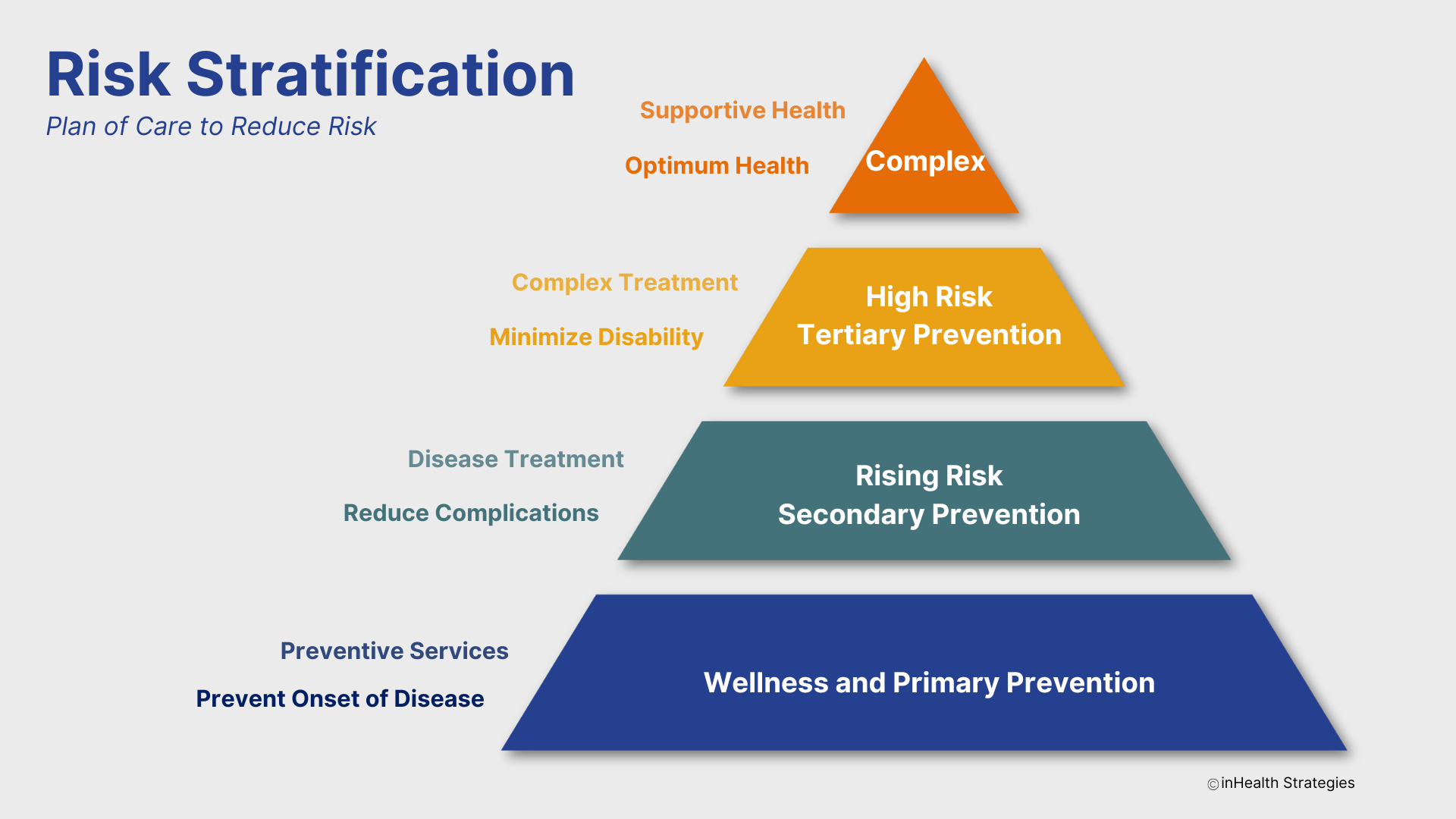A Population Health Approach for Hospital and Health System Employees
Managing wellbeing in high-risk hospital employee populations is crucial in the demanding field of healthcare, where employees face various stressors leading to health issues. Effectively addressing these risks requires a proactive approach and strategies based on population health principles.
Understanding the Challenges
Hospital and health system employees face unique challenges. Work schedules can disrupt sleep patterns and increase the risk for chronic conditions, mental and emotional stress can lead to burnout, and high-risk situations can expose them to injury or disease transmission.
Managing the wellbeing of the employee population requires a holistic approach that goes beyond the traditional focus on physical health. In fact, incorporating mental, emotional, and social wellbeing into the overall strategy is vital.
A Population Health Approach
Population health management focuses on improving the health of an entire population by addressing health determinants and reducing health disparities. Here is how to apply population health tactics in managing wellbeing:
Risk Stratification: Utilize data to identify high-risk groups within your workforce. This may be based on factors such as age, existing health conditions, or job roles. Then, tailor interventions to target these risk profiles for maximum impact.
Preventive Care: Encourage regular health screenings and vaccinations. Additionally, provide resources for healthy living, such as exercise facilities, healthy food options, and stress management programs.
Mental Health Support: Recognize the mental and emotional stress healthcare employees face and provide confidential counseling services, peer support groups, and stress reduction programs.
Occupational Health and Safety: Maintain stringent safety protocols and provide adequate personal protective equipment. Implement injury prevention and workplace safety training.
Employee Engagement: Involve employees in designing and implementing wellness programs. This ensures that the programs are relevant and meet their actual needs.
Resilience Training: Equip employees with strategies to build resilience and cope with stress. This can include mindfulness techniques, cognitive-behavioral strategies, and work-life balance skills.
Monitor and Evaluate: Regularly assess the effectiveness of your wellness programs. Then, use these insights to refine and improve your strategies.
Benefits of a Population Health Approach
By deploying these tactics, hospitals and health systems can reap several benefits:
Improved Employee Health: A comprehensive wellness program can reduce the prevalence of chronic diseases, improve mental health, and enhance overall wellbeing.
Increased Productivity: Healthier employees are more productive and take fewer sick days, improving operational efficiency.
Reduced Healthcare Costs: Prevention, early detection, and effective management of health conditions can reduce healthcare costs.
Enhanced Employee Morale: A supportive work environment prioritizing employee health can improve morale and job satisfaction, reducing turnover rates.
Optimizing Healthcare Team Wellbeing: A Population Health Approach
In summary, managing the wellbeing of hospital and health system employees is both a responsibility and an opportunity. By understanding their unique challenges and deploying a population health approach, we can significantly improve their health outcomes. This benefits the employees and, in turn, contributes to better patient care and a stronger healthcare system.
To learn more about implementing population health strategies for your healthcare workforce and how InHealth can assist you in enhancing employee wellbeing, reducing healthcare costs, and fostering a healthier workplace culture, visit out our Savings Calculator or email us at info@inhealth4change.com



